New Representation
Stanley Whitney
Gagosian is pleased to announce the representation of Stanley Whitney. Renowned for the depth of his exploration into the expressive potentials of painted color and form, Whitney has been committed to abstraction since the mid-1970s. While living in Rome in the 1990s, he consolidated a process-based painterly approach which he has now sustained and developed over the course of three decades.
Dividing square canvases into sequences of loosely defined rectangular blocks of saturated color that are demarcated by linear bands, Whitney chooses each successive color in relation to those laid down previously. His visible brushwork establishes nuanced passages amid the boundaries of these planes. The resulting chromatic and spatial interactions define relationships between each shape and the composition as a whole. The strictures of the modernist grid are loosened in his paintings, their freehand geometries at one with their progression of vivid hues.
Following the 2020 exhibition of his work at Gagosian Rome, Whitney will have a solo exhibition with the gallery in London in 2023.
#StanleyWhitney
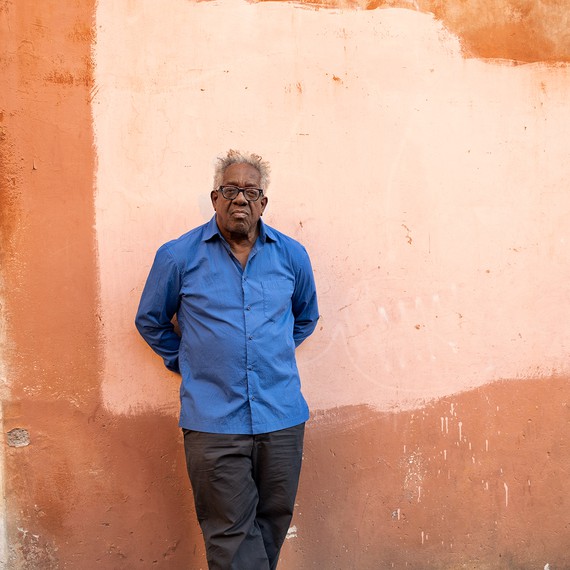
Photo: Jeannette Montgomery Barron/Trunk Archive
Related News
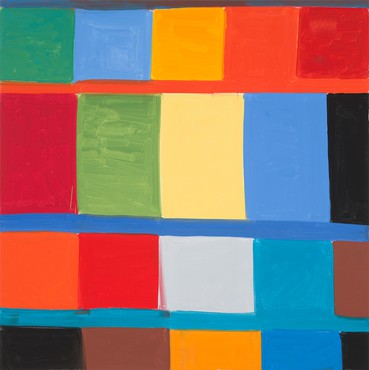
Auction
Artsy Spotlight Auction: Stanley Whitney
In Support of the Art for Justice Fund and Planned Parenthood of Greater New York
September 27–October 7, 2022
The Freedom We Fight For (2022), a new painting by Stanley Whitney, will be featured in a single-lot benefit auction hosted by Artsy, in partnership with Gagosian. All proceeds from the sale will support Art for Justice Fund and Planned Parenthood of Greater New York in their respective urgent fights for decarceration and criminal justice reform and reproductive rights in the United States. The artwork is viewable at Gagosian, Park & 75, New York, during the auction.
The eighty-inch-square oil-on-linen abstract painting underscores Whitney’s facility as a colorist. Pieced together from rectilinear fields of red, yellow, green, blue, orange, brown, black, and gray divided by horizontal bands of red, blue, and teal, its “stacked” composition, translucent layers of paint, and energetic brushwork effectively deconstruct the modernist grid. Whitney draws inspiration from Greek and Mediterranean ceramics and the juxtaposition of ancient and modern Roman architecture.
Stanley Whitney, The Freedom We Fight For, 2022 © Stanley Whitney

Commission
Stanley Whitney
Ruth R. Marder Center for Matisse Studies
The Baltimore Museum of Art has commissioned Stanley Whitney to create a set of three large-scale stained-glass windows, titled Dance with Me Henri, for the new Ruth R. Marder Center for Matisse Studies, an approximately 2,500-square-foot space on the first floor of the museum dedicated to the study of Henri Matisse, opening December 2021. Whitney has long been recognized for his vibrant explorations of color and light within the painterly structures of the grid and has often cited historic European painting—including the work of Matisse and, in particular, Matisse’s glass windows for the Chapelle du Rosaire de Vence in southern France—as a source of inspiration for his formal investigations. To create the panels, Whitney is working with Franz Mayer of Munich, one of the world’s oldest and most celebrated artist glass studios.
Stanley Whitney’s installation Dance with Me Henri (2021) at the Baltimore Museum of Art. Artwork © Stanley Whitney
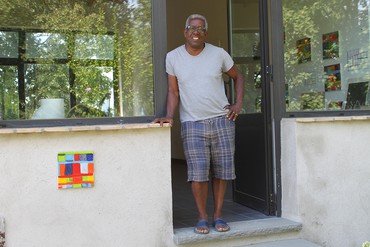
In Conversation
Stanley Whitney
Matthew Jeffrey Abrams
Thursday, October 15, 2020, 2pm EDT
In the context of Stanley Whitney’s exhibition of recent paintings at Gagosian, Rome, which closes on October 17, Whitney and author Matthew Jeffrey Abrams will discuss Abram’s new monograph on the artist and the diverse formative influences on the artist’s imagination. To join, register at zoom.us.
Stanley Whitney at his studio near Parma, Italy, 2012. Photo: Marina Adams, courtesy the artist

Francesca Woodman
Ahead of the first exhibition of Francesca Woodman’s photographs at Gagosian, director Putri Tan speaks with historian and curator Corey Keller about new insights into the artist’s work. The two unravel themes of the body, space, architecture, and ambiguity.
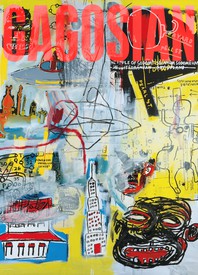
Now available
Gagosian Quarterly Spring 2024
The Spring 2024 issue of Gagosian Quarterly is now available with a fresh cover design featuring Jean-Michel Basquiat’s Lead Plate with Hole (1984).
Simon Hantaï: Azzurro
Join curator Anne Baldassari as she discusses the exhibition Simon Hantaï:Azzurro, Gagosian, Rome, and the significance of blue in the artist’s practice. The show forms part of a triptych with Gagosian’s two previous Hantaï exhibitions, LES NOIRS DU BLANC, LES BLANCS DU NOIR at Le Bourget in 2019–20, and Les blancs de la couleur, la couleur du blanc in New York, in 2022.

Sofia Coppola: Archive
MACK recently published Sofia Coppola: Archive 1999–2023, the first publication to chronicle Coppola’s entire body of work in cinema. Comprised of the filmmaker’s personal photographs, developmental materials, drafted and annotated scripts, collages, and unseen behind-the-scenes photography from all of her films, the monograph offers readers an intimate look into the process behind these films.
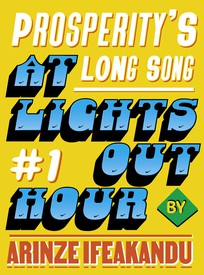
Prosperity’s Long Song #1: At Lights-Out Hour
We present the first installment of a four-part short story by Arinze Ifeakandu. Set at the Marian Boys’ Boarding School in Nigeria, “Prosperity’s Long Song” explores the country’s political upheavals through the lens of ancient mythologies and the mystical power of poetry.

Mount Fuji in Satyajit Ray’s Woodblock Art, Part II
In the first installment of this two-part feature, published in our Winter 2023 edition, novelist and critic Amit Chaudhuri traced the global impacts of woodblock printing. Here, in the second installment, he focuses on the films of Satyajit Ray, demonstrating the enduring influence of the woodblock print on the formal composition of these works.

Adaptability
Adam Dalva looks at recent films born from short stories by the Japanese writer Haruki Murakami and asks, What makes a great adaptation? He considers how the beloved surrealist’s prose particularly lends itself to cinematic interpretation.

Vladimir Kagan’s First Collection: An Interview with Chris Eitel
Chris Eitel, Vladimir Kagan’s protégé and the current director of design and production at Vladimir Kagan Design Group, invited the Quarterly’s Wyatt Allgeier to the brand’s studio in New Jersey, where the two discussed the forthcoming release of the First Collection. The series, now available through holly hunt, reintroduces the first chair and table that Kagan ever designed—part of Eitel’s efforts to honor the furniture avant-gardist’s legacy while carrying the company into the future.

Game Changer: Alexey Brodovitch
Gerry Badger reflects on the persistent influence of the graphic designer and photographer Alexey Brodovitch, the subject of an upcoming exhibition at the Barnes Foundation, Philadelphia.

Outsider Artist
David Frankel considers the life and work of Jeff Perrone, an artist who rejected every standard of success, and reflects on what defines an existence devoted to art.

Goetheanum: Rudolf Steiner and Contemporary Art
Author and artist Ross Simonini reports on a recent trip to the world center of the anthroposophical movement, the Goetheanum in Switzerland, exploring the influence of the movement’s founder and building’s designer Rudolf Steiner on twentieth-century artists.

Duane Hanson: To Shock Ourselves
On the occasion of an exhibition at Fondation Beyeler, novelist Rachel Cusk considers the ethical and aesthetic arrangements that Duane Hanson’s sculpture initiates within the viewer.
